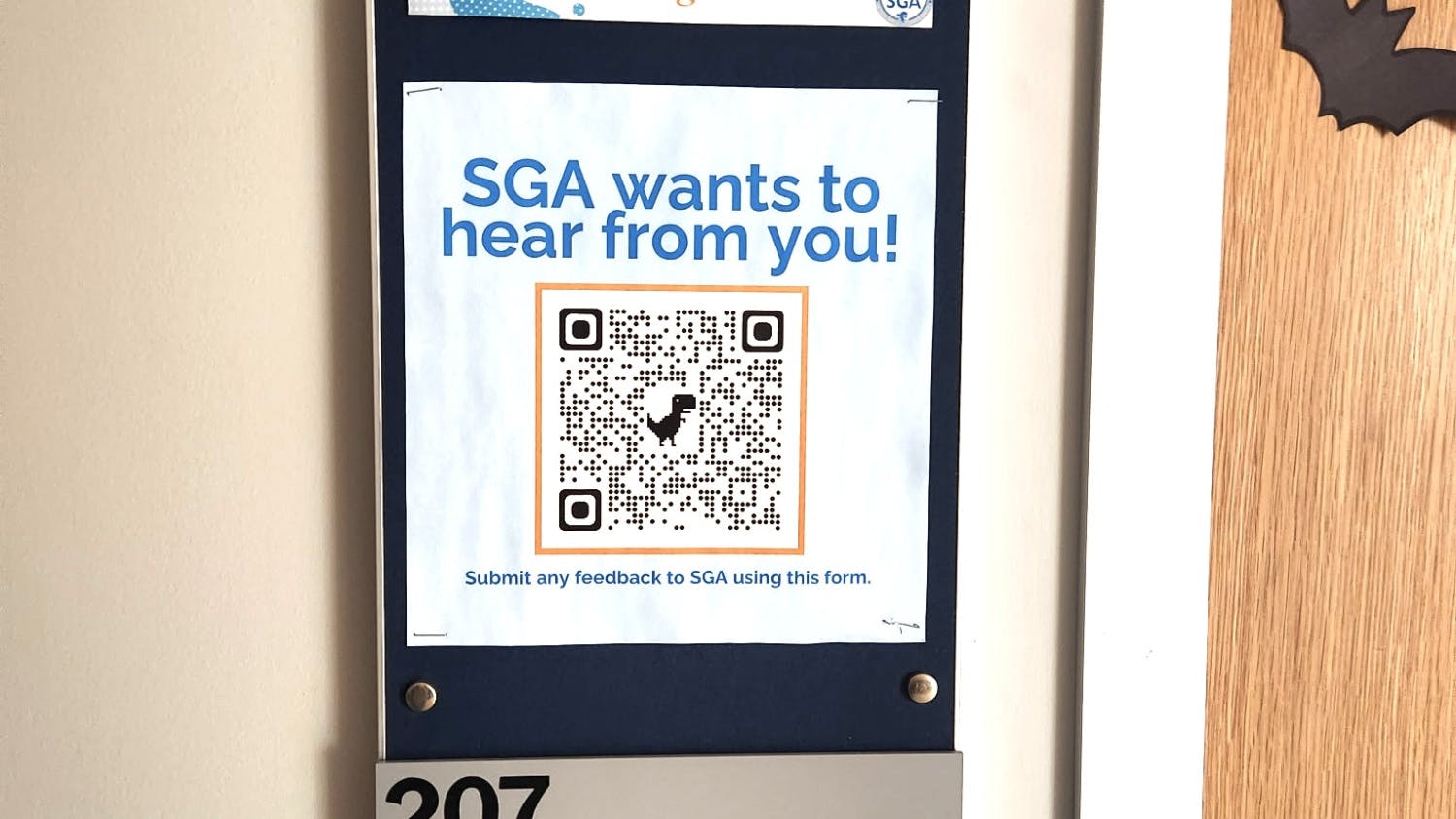[caption id="" align="alignnone" width="507"] Courtesy of surverys.ope.ed.gov[/caption]
A study released by the U.S. Department of Education this earlier this month added even more information to the ever-growing list of college rankings. But this new measure, called the College Scorecard Data, reveals a bit of information that could end up being the deciding factor for prospective college students nationwide: earnings after graduation.
According to the Scorecard, 77 percent of students who attend Seton Hall will, on average, earn
more than those who have received only a high school diploma. The average salary for SHU graduates is just over $53,000, topping the national average, which is around $34,000.
What sets this study apart from others is the massive amount of information it contains and the unique nature of some of the data. The numbers come from students who applied for federal student aid and received it. The government had access to tax return data from the Free Application for Federal Student Aid, and that is where the measure of salary was drawn. The earnings in this survey were tracked in 2011-2012, so the students measured graduated college in 2001-2002.
Robert Kelchen, an assistant professor of higher education at Seton Hall’s Department of Education Leadership, Management and Policy, said although the data measures a much older class, it is still of value to students today.
Kelchen said the section of data that might be most valuable to current students is earnings. “Earning measure is heavily influenced by two factors,” he said. The first major influence is the type of
major students choose. “Additionally we’re in an area where the cost of living is extremely high and the salaries may be higher, but how much you can buy with that is lower in other parts of the country.”
The College Scorecard Data revealed information about schools individually, but it did not initially rank schools against each other. The most effective way to interpret the data, Kelchen said, would be to compare colleges with similar mixes of majors in similar parts of the country.
In the state of New Jersey, other schools like Montclair State University have a lower average annual cost, around $20,000, but students there also can expect a lower salary after attending, with 68 percent of students moving on to make more than they would with just a high school diploma.
At Rutgers University in New Brunswick, 74 percent of students who attended earn more than those with a high school diploma. One other drawback of the data that Kelchen mentions is that it does not take into account different majors in its earnings study. “One thing that will be coming a few years down the road is salaries by major. I think that’s a lot more useful because, if you want to major in engineering, your expected salary is far different than if you want to major in education,” he said.
Another notable aspect of the data is the rate at which students pay off their debt. This is the rate of students who have paid at least $1 of the principal balance on their federal loans within three years of leaving school. At Seton Hall, this rate is 89 percent; The national average is 67 percent.
Additionally, the typical total debt at SHU for undergraduate borrowers who complete college is $25,000, while the typical monthly loan payment is $278.
While reading the data, one must keep in mind one other limitation.“The measure for earnings is only available for students who received federal financial aid,” Kelchen said. “It excludes the higher income students that didn’t need any financial aid to make it through college and it excludes also a small number of primarily lower income students who just couldn’t fill out the FAFSA.”
There are programs on campus to advise students and help manage their loan payment. Andrew Minegar, Director of Communication Services and Information Systems for Enrollment Services, is part of a team that promotes the nonprofit SALT on campus. SALT is a money-management tool for students.
“SALT has in-depth, easy-tofollow advice on every aspect of the student loan process: how much to borrow, the different types of loans, how to plan repayment after graduation,” Minegar said in an email.
The program goes beyond loan-payment advice, says Minegar. “It helps students set financial goals; it provides tips on finding great internships and interviewing for jobs; it gives you insight into the factors that determine a good credit score. In short, it is a very extensive resource for all things dealing with money,” he said.
Although the academic year is already under way, students can still sign up for the SALTprogram.
“Over the long term, a student who makes good financial decisions during college, whether those decisions deal with the amount of student loans they take out or how much they spend per month on take-out, will be in a better position to complete their degree and pay back any loans when they graduate,” Minegar said.
Students can sign up at SALTMoney.org/SHU with their student email address.
Mary Marshall can be reached at mary.marshall@student.shu.edu.
Courtesy of surverys.ope.ed.gov[/caption]
A study released by the U.S. Department of Education this earlier this month added even more information to the ever-growing list of college rankings. But this new measure, called the College Scorecard Data, reveals a bit of information that could end up being the deciding factor for prospective college students nationwide: earnings after graduation.
According to the Scorecard, 77 percent of students who attend Seton Hall will, on average, earn
more than those who have received only a high school diploma. The average salary for SHU graduates is just over $53,000, topping the national average, which is around $34,000.
What sets this study apart from others is the massive amount of information it contains and the unique nature of some of the data. The numbers come from students who applied for federal student aid and received it. The government had access to tax return data from the Free Application for Federal Student Aid, and that is where the measure of salary was drawn. The earnings in this survey were tracked in 2011-2012, so the students measured graduated college in 2001-2002.
Robert Kelchen, an assistant professor of higher education at Seton Hall’s Department of Education Leadership, Management and Policy, said although the data measures a much older class, it is still of value to students today.
Kelchen said the section of data that might be most valuable to current students is earnings. “Earning measure is heavily influenced by two factors,” he said. The first major influence is the type of
major students choose. “Additionally we’re in an area where the cost of living is extremely high and the salaries may be higher, but how much you can buy with that is lower in other parts of the country.”
The College Scorecard Data revealed information about schools individually, but it did not initially rank schools against each other. The most effective way to interpret the data, Kelchen said, would be to compare colleges with similar mixes of majors in similar parts of the country.
In the state of New Jersey, other schools like Montclair State University have a lower average annual cost, around $20,000, but students there also can expect a lower salary after attending, with 68 percent of students moving on to make more than they would with just a high school diploma.
At Rutgers University in New Brunswick, 74 percent of students who attended earn more than those with a high school diploma. One other drawback of the data that Kelchen mentions is that it does not take into account different majors in its earnings study. “One thing that will be coming a few years down the road is salaries by major. I think that’s a lot more useful because, if you want to major in engineering, your expected salary is far different than if you want to major in education,” he said.
Another notable aspect of the data is the rate at which students pay off their debt. This is the rate of students who have paid at least $1 of the principal balance on their federal loans within three years of leaving school. At Seton Hall, this rate is 89 percent; The national average is 67 percent.
Additionally, the typical total debt at SHU for undergraduate borrowers who complete college is $25,000, while the typical monthly loan payment is $278.
While reading the data, one must keep in mind one other limitation.“The measure for earnings is only available for students who received federal financial aid,” Kelchen said. “It excludes the higher income students that didn’t need any financial aid to make it through college and it excludes also a small number of primarily lower income students who just couldn’t fill out the FAFSA.”
There are programs on campus to advise students and help manage their loan payment. Andrew Minegar, Director of Communication Services and Information Systems for Enrollment Services, is part of a team that promotes the nonprofit SALT on campus. SALT is a money-management tool for students.
“SALT has in-depth, easy-tofollow advice on every aspect of the student loan process: how much to borrow, the different types of loans, how to plan repayment after graduation,” Minegar said in an email.
The program goes beyond loan-payment advice, says Minegar. “It helps students set financial goals; it provides tips on finding great internships and interviewing for jobs; it gives you insight into the factors that determine a good credit score. In short, it is a very extensive resource for all things dealing with money,” he said.
Although the academic year is already under way, students can still sign up for the SALTprogram.
“Over the long term, a student who makes good financial decisions during college, whether those decisions deal with the amount of student loans they take out or how much they spend per month on take-out, will be in a better position to complete their degree and pay back any loans when they graduate,” Minegar said.
Students can sign up at SALTMoney.org/SHU with their student email address.
Mary Marshall can be reached at mary.marshall@student.shu.edu.





